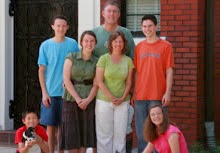


May 14-15, 2010
On Friday and Saturday, we had a well attended training seminar for pastors and church leaders. It was conducted through Timothy Leadership Institute (http://www.timothyleadershiptraining.org/) and I was a liaison to promote and recruit this event within the National Presbyterian Church of Mexico (NPCM). Overall, there were about 30 in attendance with about half from NPCM churches.
This particular training focused on congregational care and visitation; however it is part of a series of very practical training that is progressive. We have strategically planned to do the next seminar in February 2011. There are two things that excite me about the potential of this training. First, it is very practical and hands-on. During the intervening 8 months before the next training, each participant will conduct their own series of projects utilizing what was learned from the conference. Secondly, the training is leveraged by engaging others in the church to be similarly equipped. The conference is kind of a “training the trainer” event and the ensuing months are when the participants practice what they learned while they teach it to others in their congregations. As each key theme is taught, the church continues to grow and congregants are trained and future leaders are equipped. As we cover subsequent training topics such as stewardship, preaching, and teaching the Christian faith, the church grows in faith and the membership is trained and prepared for more effective ministry.

